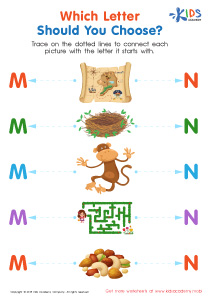Handwriting practice Normal Lowercase/Small Letters Worksheets for 4-Year-Olds
8 filtered results
-
From - To
Introduce your 4-year-old to the world of writing with our Handwriting Practice Normal Lowercase/Small Letters Worksheets. Carefully crafted to develop fine motor skills and letter recognition, these engaging worksheets focus on each lowercase letter, offering trace and practice activities. Designed to make learning fun, our exercises build confidence and prepare your child for successful writing. With easy-to-follow instructions, vibrant visuals, and a hands-on approach, consolidating letter formation and pen control has never been more enjoyable. Ideal for at-home practice or classroom support, these worksheets are a perfect addition to your early literacy toolkit.
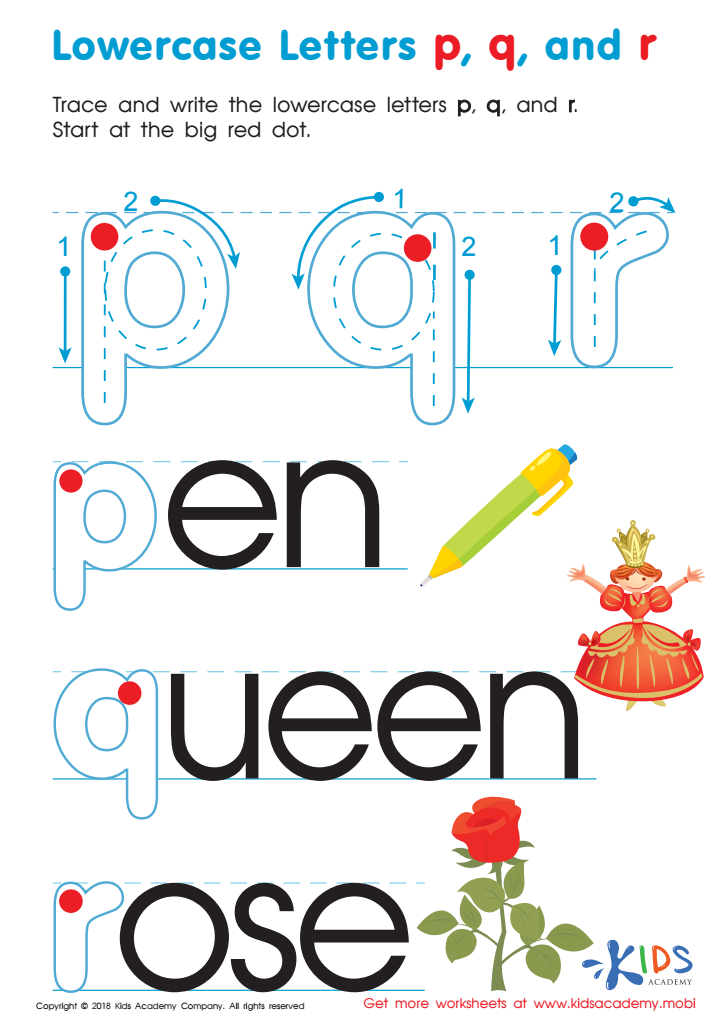

Lowercase Letters p q r Worksheet
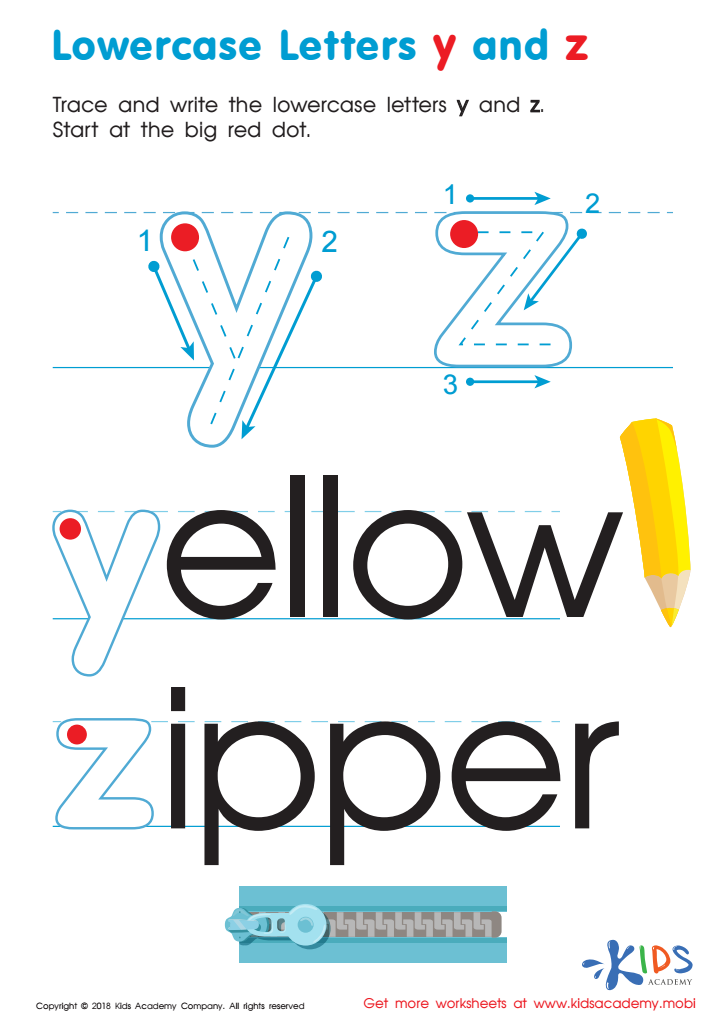

Lowercase Letters y z Worksheet
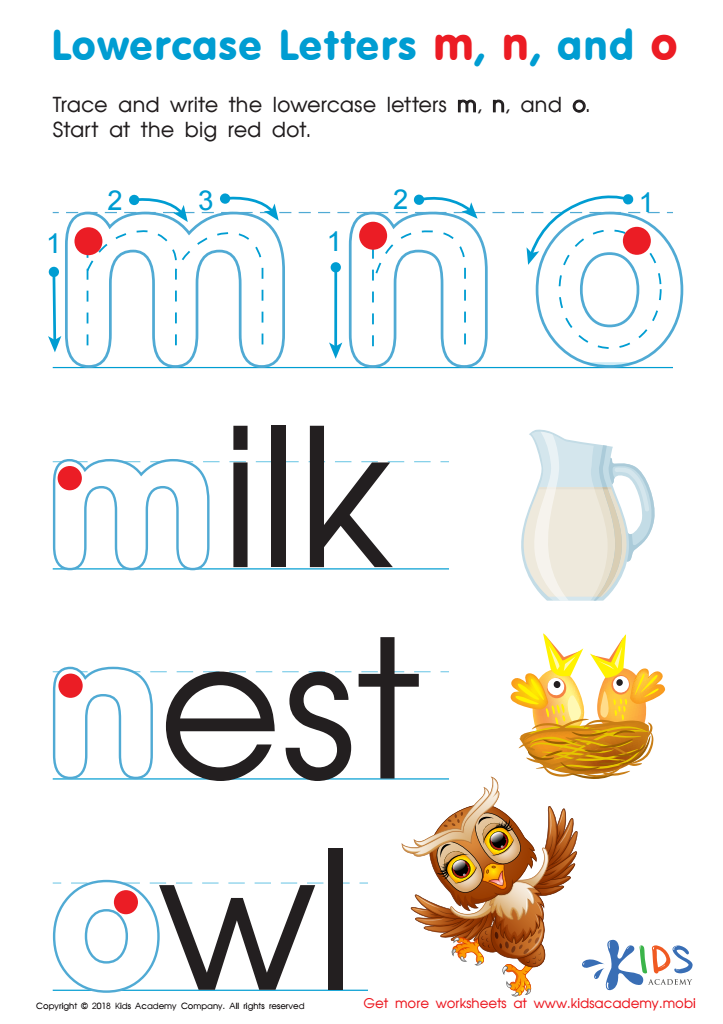

Lowercase Letters m n o Worksheet
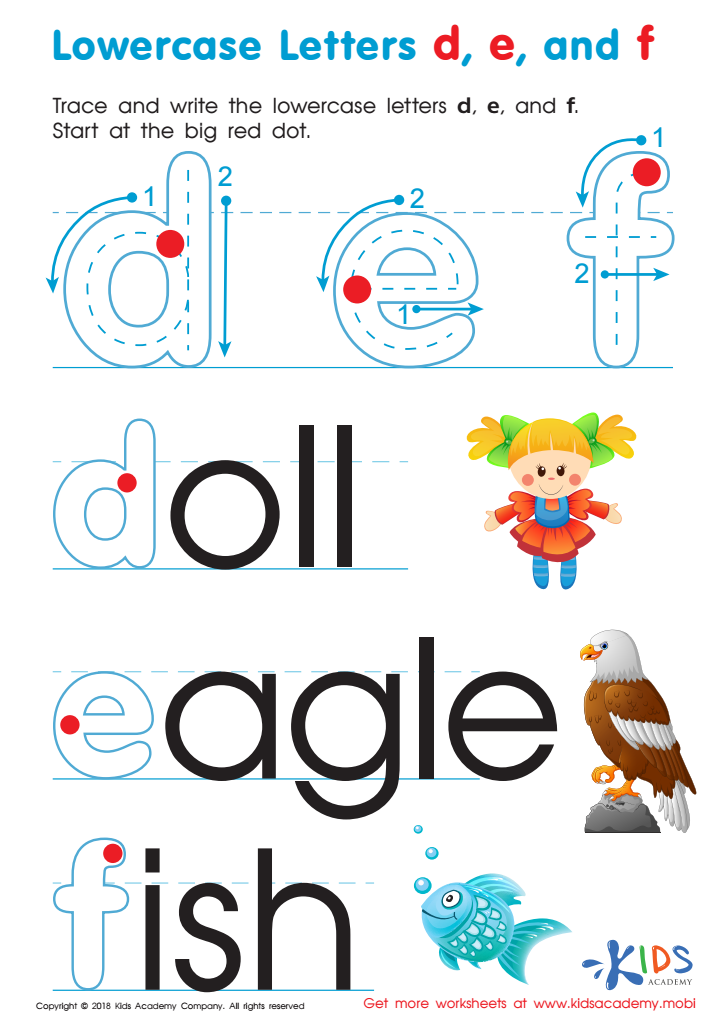

Lowercase Letters d e f Worksheet
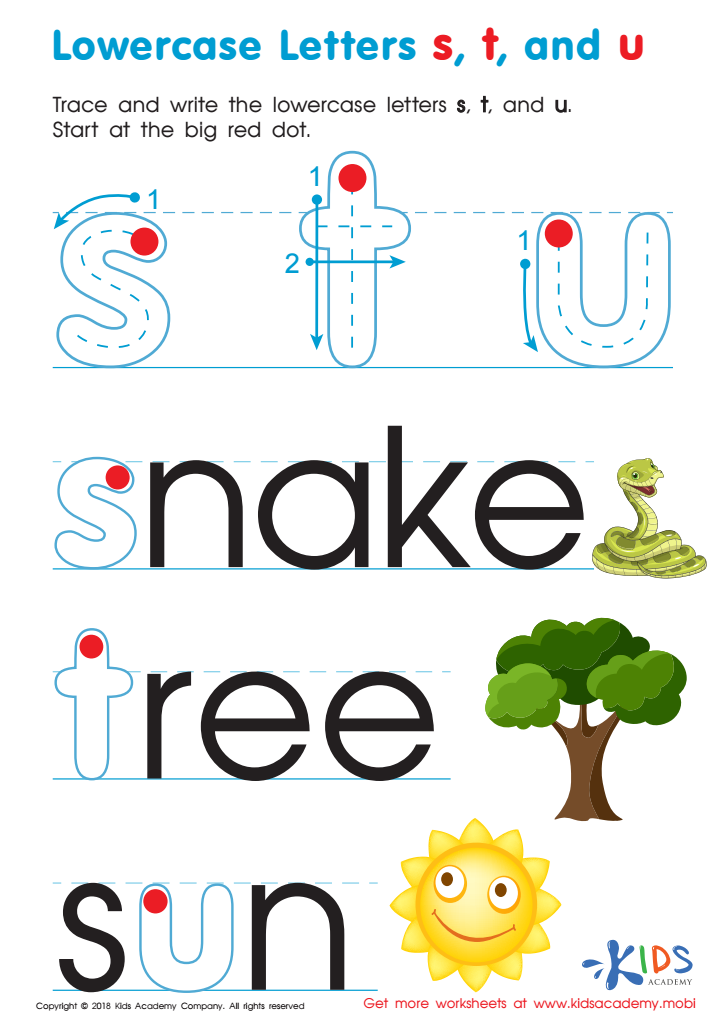

Lowercase Letters s t u Worksheet
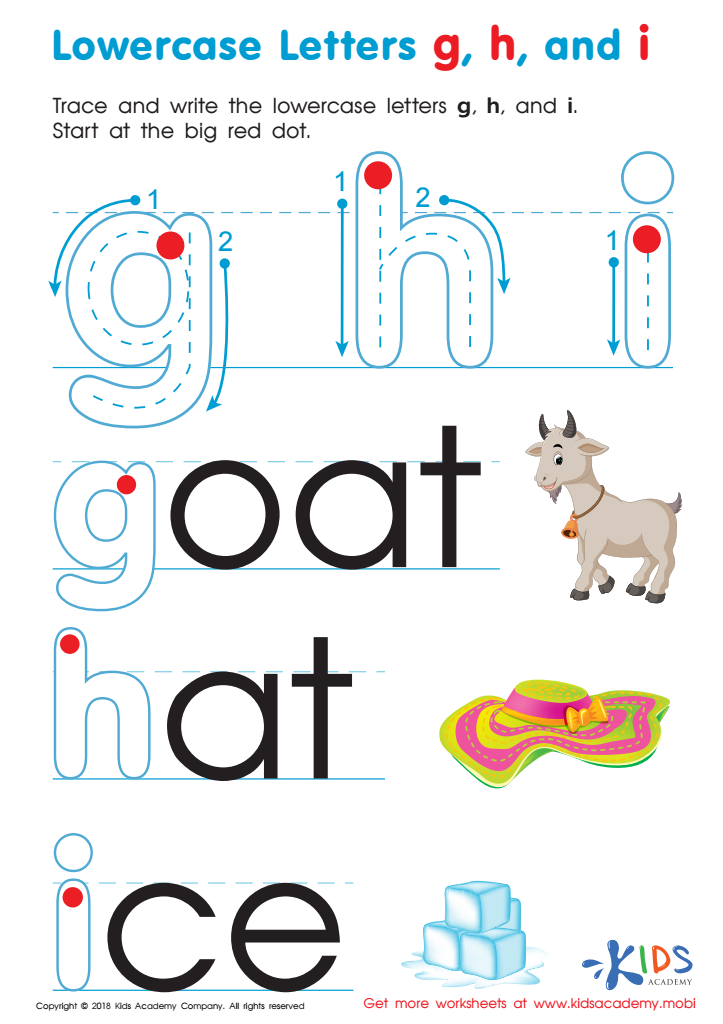

Lowercase Letters g h i Worksheet
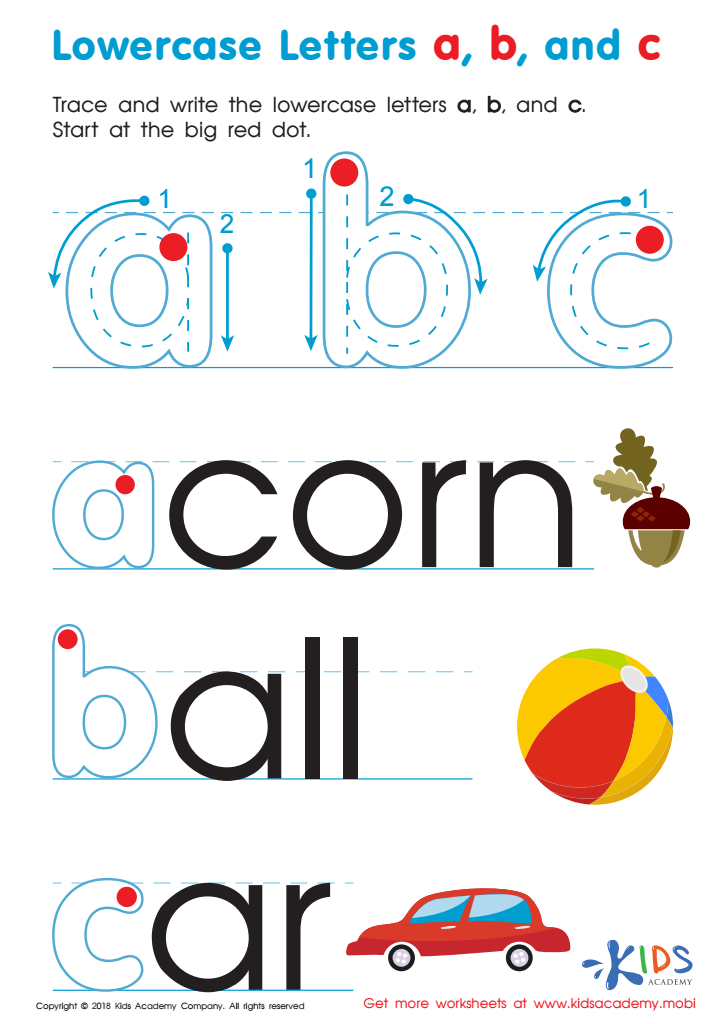

Lowercase Letters a b c Worksheet
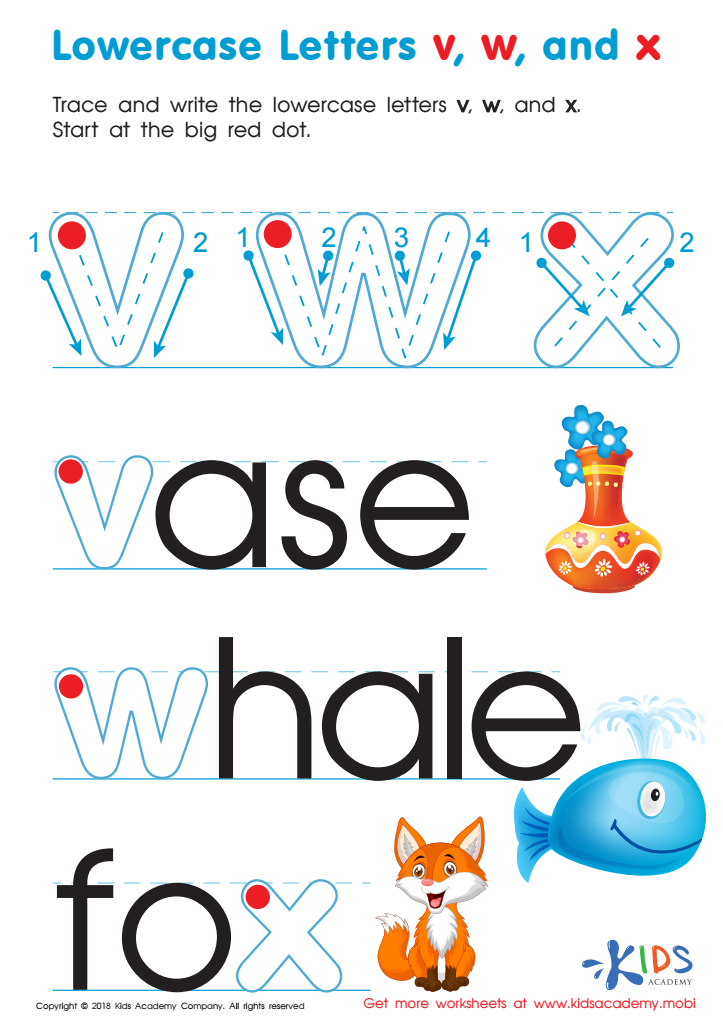

Lowercase Letters v w x Worksheet
Handwriting practice focusing on normal lowercase or small letters is crucial for 4-year-olds due to its profound impact on various developmental aspects. At this tender age, children are perfecting their fine motor skills, and forming small letters helps them control hand movements, enhancing dexterity and coordination. This fine motor skill is not only foundational for writing but also essential for other tasks like buttoning clothes and using utensils.
Moreover, learning to write small letters accurately aids in recognizing letter shapes, which fortifies their reading abilities as they begin connecting spoken sounds to written forms. This connection between writing and reading is a stepping stone to literacy and effective communication skills.
Emotionally, successful handwriting practice boosts self-confidence and fosters a sense of accomplishment. Each accurately penned lowercase letter becomes a source of pride, encouraging perseverance and patience.
For teachers and parents, these exercises are prime opportunities for positive reinforcement, setting the stage for continual learning and curiosity. Engaging in handwriting activities also fosters quality parent-child interaction or teacher-student bonding, enriching their relationship.
Thus, early handwriting practice isn’t merely about neat penmanship; it’s integral to cognitive, motor, emotional, and social development, making it indispensable for holistic growth and a solid educational foundation.
 Assign to My Students
Assign to My Students




